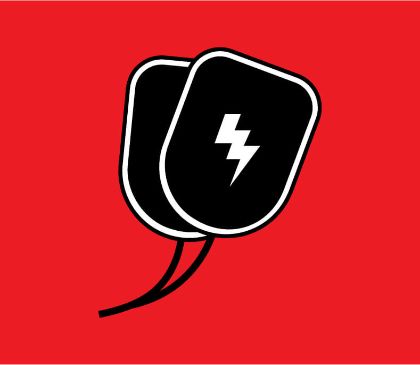Why Are AEDs Important During SCA?
- Mar 30, 2020

Sudden Cardiac Arrest (SCA) can happen anywhere to anyone.
Airports, schools, and workplaces — SCA has struck at all of them.
Think it can’t happen to you? Check out our story on athlete and SCA survivor Rob Seymour. Rob, an avid runner, was just 26 when he collapsed soon after finishing the Broad Street Run in Philadelphia in 2015. Moments after Rob’s collapse, a nearby team of paramedicssprang into action and saved his life. One began performing CPR while the other grabbed a portable automatic external defibrillator (AED). The device quickly recognized that his heart had gone into ventricular fibrillation (V-fib) and applied one shock. After the life-saving shock, Rob’s heart resumed its normal rhythm.
AED use and timely CPR can increase the chance of survival by more than 40%
AEDs do more than deliver a shock to the heart (which effectively stops irregular heartbeats arrhythmias and allow normal heart rhythms to resume). They also provide would-be rescuers with the instructions they need to perform cardiopulmonary resuscitation (CPR) — whether or not they’ve been CPR and First Aid certified.
CPR is an easy-to-learn lifesaving procedure undertaken by first responders or bystanders that, when done correctly, maintains the flow of oxygen to and from the brain and other vital organs. Often, artificial respiration (mouth-to-mouth or bag-valve mask ventilation) accompanies manual chest compressions; however, compression-only CPR is an increasingly accepted method as well.
With each minute that goes by, the chance of survival drops by 7-10%
Here at Cardio Partners, we’re huge advocates for CPR training and AEDs. We pride ourselves on providing educational content — which is why we think stats like this can be so eye-opening.
It’s not enough to have an AED, it needs to be visible and easily accessible. Because every minute counts. Take a moment to read our post about AED placement and make sure that you find the perfect location for your AED.
AED Placement Checklist:
-
AEDs should be highly visible and easy to reach and remove with one hand.
-
According to the Americans with Disabilities Act (ADA) guidelines, the height to reach the handle of an AED should be no more than 48 inches.
-
For maximum efficacy, be sure to train key personnel throughout the building on how to properly use an AED.
-
Regularly inspect your equipment for signs of tampering and to make sure it’s emergency-ready.
-
Invest in an AED Compliance Management program or a Preventative Maintenance Program.
-
Placing non-latex protective gloves, CPR face masks, scissors, safety razors (to shave the victim’s chest hair, as necessary), absorbent towels, and a first aid kit near your AED.
-
Consider adding a few Stop The Bleed kits next to your AED.
For more information about purchasing a new or recertified AED or to schedule an AED training or AED maintenance, contact Cardio Partners at 800-544-0004. We also welcome your emails, you can reach us at customerservice@cardiopartners.com.
DISCLAIMER: Information and resources found on the cardiopartners.com and aed.com websites/blogs is intended to educate, inform, and motivate readers to make their health and wellness decisions after consulting with their healthcare provider. The authors are not healthcare providers. NO information on this site should be used to diagnose, treat, prevent, or cure any disease or condition.








 CALL US:
CALL US: